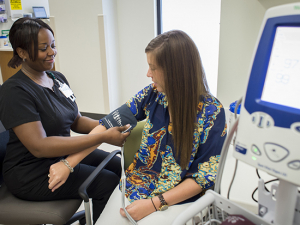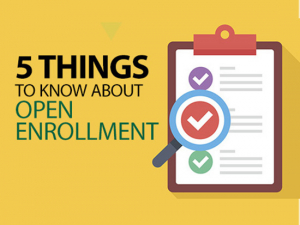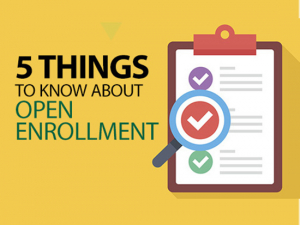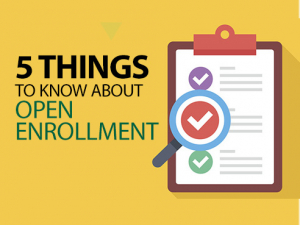 Staff in all campus schools and units will use a standard process and timeframe for annual performance reviews between July and September 2020.For the first time in UAB’s history, staff in all campus schools and units will use a standard process and timeframe for annual performance reviews between July and September 2020.
Staff in all campus schools and units will use a standard process and timeframe for annual performance reviews between July and September 2020.For the first time in UAB’s history, staff in all campus schools and units will use a standard process and timeframe for annual performance reviews between July and September 2020.
Before the new performance-management process rolls out campuswide, it got a review of its own. In fall 2019, 2,000 employees in 19 schools and units piloted the system. Their insights have helped shape the wording, timing and layout of the process.
“Regular feedback allows each employee to perform at their best,” said Chief Human Resources Officer Alesia Jones. “With such a broad and diverse workforce at UAB, it is a challenge to find a process that fits all of our employees. But we have been committed to developing and refining a system that ensures a consistent and relevant experience across the institution.”
Conversations about performance “are an opportunity to live out UAB’s Shared Values, including respect, collaboration and accountability,” Jones said. “We can provide tools and resources, but ultimately this is about the relationship between managers and their teams. Every performance conversation should leave both parties feeling heard and valued.”
1. This is a more level playing field.
How did we get here? On the 2017 Campus Engagement Survey, staff and faculty responses to several statements flagged performance management as an area needing attention (see "Improvement, but more necessary"). Historically, units and schools followed different processes — some conducted evaluations based on start date, others chose a specific month, and some did not do evaluations at all.
Following the 2017 survey, Performance Management Minimum Standards were developed to establish a benchmark for use across the institution. A standardized electronic performance-review system was created by Human Resources and Central IT, resulting in a consistent timeline to help communicate the process throughout the campus.
 Historically, schools and units followed different processes and timetables for annual reviews — or did not do evaluations at all. Following the 2017 Campus Engagement Survey, Performance Management Minimum Standards were developed to establish a benchmark for use across campus.
Historically, schools and units followed different processes and timetables for annual reviews — or did not do evaluations at all. Following the 2017 Campus Engagement Survey, Performance Management Minimum Standards were developed to establish a benchmark for use across campus.
2. You will be heard.
Between July 1 and Sept. 30, all campus managers will hold annual performance reviews with the eligible full-time and part-time regular status staff who report to them. During that period, both staff and their managers must complete a three-step electronic performance-evaluation form on the UAB Performance Management App, linked from the Performance Management web page. (Faculty follow a different process; see question 6 below.)
 Feel like the annual review puts you under the microscope? The real goal is a conversation between employees and their managers that should leave both parties feeling heard and valued.
Feel like the annual review puts you under the microscope? The real goal is a conversation between employees and their managers that should leave both parties feeling heard and valued.
3. This process was redeveloped by the UAB community.
The 2,000 employees who took part in the performance management pilot in 2019 provided more than 500 comments, offering insights on the experience and recommended actions for improvement.
A Performance Management core team in Human Resources identified 13 separate insights based on participant feedback. These insights led directly to revisions in the wording and layout of the performance-evaluation form and schedule. The rest are the subject of further discussions (more below).
 A 2019 pilot of the new performance management process involved 2,000 employees and produced more than 500 comments. These insights were used to redesign the process for this year's campuswide rollout.
A 2019 pilot of the new performance management process involved 2,000 employees and produced more than 500 comments. These insights were used to redesign the process for this year's campuswide rollout.
- For instance, the formal evaluation period in 2019 was Aug. 1-Sept. 30. Many commenters said this added to an already busy time as many staff are getting ready for the fall semester. So, the timeframe was extended a month; it now begins July 1 and continues to the end of September. Compensation guidelines for FY2020 will include amended dates to better align with the formal evaluation period.
- Other refinements include adding an easier way to print evaluations and reinstating a text box and prompt from previous evaluation forms that allowed employees to describe resources or support needed from their supervisor.
4. The ratings and criteria are clearly articulated.
How will you be rated — and based on what criteria? For the 2019 pilot, a five-label rating scale replaced the numerical (1–5) system used in UAB’s previous performance-evaluation template. Feedback from both managers and employees participating in the pilot included a request to clarify the meaning of these labels, particularly the definitions of “Exceeds Expections” and “Exceptional.”
 Not just a number: a five-label rating scale replaces the numerical system used previously.
Not just a number: a five-label rating scale replaces the numerical system used previously.
The updated labels and descriptions that will be used in 2020 are below:
- Does Not Meet Expectations (previously Unsatisfactory)
- Does not meet minimum job requirements. Responsibilities are not met, and important objectives have not been accomplished. Needs immediate improvement.
- Meets Some but Not All Expectations (previously Needs Improvement)
- Performance in one or more critical areas did not meet expectations. Not all planned objectives were accomplished within the established standards, and some responsibilities were not completely met.
- Meets Expectations (no change)
- Job requirements were met, and planned goals accomplished within established standards. There were no critical areas where accomplishments were less than planned.
- Meets Some, Exceeds Other Expectations (previously Exceeds Expectations)
- Consistently meets or exceeds established standards. All requirements were met, and objectives were achieved.
- Consistently Exceeds Most Expectations (previously Exceptional)
- Exceptional performance. Planned objectives were achieved well above the established standards, and accomplishments were achieved in unexpected areas.
The criteria that managers will use to determine their ratings also have been updated for clarity as a result of feedback from the 2019 pilot process.
The updated criteria and descriptions are below:
- Job Knowledge & Skills: Consistently fulfills performance expectations by meeting productivity, efficiency and quality standards. Develops and enhances relevant skills. Stays aware of current developments in discipline or specialty area.
- Service Quality: Effectively meets and manages stakeholders’ and colleagues’ expectations. Keeps commitments, meets deadlines and ensures satisfaction with results.
- Problem Solving/Innovation: Takes ownership of problems and proposes solutions. Proactively seeks ways to improve processes and increase efficiencies. Open to new ideas and encourages others to offer suggestions.
- Communication: Conveys key messages, written and verbal, with consistency and clarity. Uses the appropriate medium to effectively convey information. Intentionally builds trust by demonstrating respect for others.
- Listening: Actively listens for understanding through asking effective questions. Acknowledges others’ ideas, concerns and feelings.
- Teamwork: Supports team goals and works with others to accomplish team objectives. Acknowledges and leverages the strengths of others. Works toward sharing knowledge and information for the benefit of the team. Open to different perspectives and ideas.
5. There can only be one.
What about employees with dual assignments on campus and in clinical settings?
Individuals with dual assignments — those in both Workgroup A (Administrative) and Workgroup C (Clinical), for example — will follow the evaluation process of their primary assignment, regardless of prior processes that were followed.
 Primary, not prior: Employees with dual assignments will follow the evaluation process of their primary assignment.
Primary, not prior: Employees with dual assignments will follow the evaluation process of their primary assignment.
6. This is not for faculty.
Chairs and other faculty leadership are required to provide written annual performance documentation. Like the staff evaluations, faculty evaluations must be submitted online through the Human Resources app, to be maintained in the permanent HR files for reporting purposes .
Detailed expectations, processes and other standards for faculty evaluations continue to be managed and maintained by the Office of the Provost and at the school level.
 The new process is for staff evaluations; faculty evaluations continue to be managed and maintained by the provost and schools.
The new process is for staff evaluations; faculty evaluations continue to be managed and maintained by the provost and schools.
7. All evaluations must be submitted online.
What about employees with limited access to computers? A risk assessment identified a limited number of affected employees; access concerns will be addressed on a case-by-case basis.
Other UAB processes, including open enrollment for benefits and job applications through the Taleo system, require technology access and have been successfully implemented.
 Evaluations, like other processes such as open enrollment and job applications, require computer access. Any access concerns will be addressed on a case-by-case basis.
Evaluations, like other processes such as open enrollment and job applications, require computer access. Any access concerns will be addressed on a case-by-case basis.








































